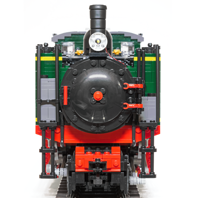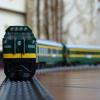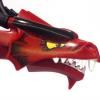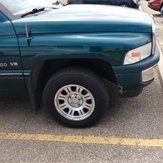-
Content Count
678 -
Joined
-
Last visited
About Sven J

- Birthday 08/07/1976
Spam Prevention
-
What is favorite LEGO theme? (we need this info to prevent spam)
trains
Profile Information
-
Gender
Male
-
Location
Oberhausen, NRW
-
Interests
railway (esp. steam locomotives), aviation, industrial history, music
Extra
-
Country
Germany
Recent Profile Visitors
9146 profile views
-
Hi, I replied to your PM on Wednesday evening. As it is still marked unread, you probably didn't receive a notification, so I thought I'd mention it here.
- 16 replies
-
- steam
- locomitive
-
(and 1 more)
Tagged with:
-
Yes, something like that. But you can make similar stickers by yourself quite easily; if you like, you're welcome to PM me to discuss further details. I'd make them longer and 0.5-1 stud higher, if possible. Look at this drawing (sorry, didn't find a better one on the web, but can provide you with copies from my library, if you need): The smoke deflectors extend to the back of the chimney and cylinders, and they're about 1/2 of the boiler diameter in height. Can't wait to see your BR 41...
- 16 replies
-
- steam
- locomitive
-
(and 1 more)
Tagged with:
-

[MOC] Hespertalbahn No. 8 (Krupp type "Knapsack" 0-6-0T) in 1/32 scale
Sven J replied to Sven J's topic in LEGO Train Tech
Thank you @Ropefish and @Shiva! No, I'm not reallyfond of rail-powered trains. First, I like the possibility of controlling different locomotives at the same time, which is easier with RC engines. Second, the wye in my track layout would result in a short circuit... -

[MOC] Hespertalbahn No. 8 (Krupp type "Knapsack" 0-6-0T) in 1/32 scale
Sven J replied to Sven J's topic in LEGO Train Tech
Thank you @JopieK! Here's finally a photo of the entire "museum train" in all its beauty: -
That locomotive looks really good! However, there are two things that, IMHO, could be improved: First, I'd give it a proper lettering. The 7750 touch is nice and nostalgic, but you've worked so hard on creating an accurate replica of the BR 01 that prototypical DB numbers and lettering would really put it in the "scale model" league. Second, the smoke deflectors are way too small and too close to the boiler. Correcting this would make the model even more outstanding. As for your surplus of XL wheels: Have you considered building a BR 41? For a 9-wide model, the XL wheels should be just about perfect...
- 16 replies
-
- steam
- locomitive
-
(and 1 more)
Tagged with:
-

[MOC] Hespertalbahn No. 8 (Krupp type "Knapsack" 0-6-0T) in 1/32 scale
Sven J replied to Sven J's topic in LEGO Train Tech
Hello everyone, It took ages, but now I've finally got around to making a video. Here it is: The speed in the last scene is equivalent to ~35 km/h; however, the BuWizz was only set to "Normal". With "Fast" or "Ludicruous", the locomotive can run much faster... I was pretty amazed that the little engine with just one L-motor could pull the train away so easily, even in "Normal" mode. And the battery lasts surprisingly long, around two hours of mixed shunting and "mainline" operation are possible. All in all, I'm very happy with the locomotive, it's by far the most trouble-free of all my engines. Best regards, Sven -
Yes, Bricksafe offers a lot of possibilities and is easy to use. However, having read this, it might be wise to look for alternatives... https://forum.rebrickable.com/t/new-feature-moc-gallery-without-bricksafe/162649/7 (login may be required to read the discussion)
-
Sorry, guys, but don't you get tired fighting the same fight over and over again? About the Countach, all and everything has already been said, and has been said multiple times. Go and discover the rest of this forum...
-
Hi all, "That decomposing rattletrap", "that oxidated relic" – this is how Oscar Finch (Patrick McGoohan), murderous lawyer in "Agenda for Murde"“, calls Lieutenant Columbo’s famous, if shabby, 1959 Peugeot 403 Convertible. As a long-time admirer of the „Columbo“ TV series, I finally decided to build that car in LEGO® form, although (with its subtle curves) it is not very well-suited for being recreated in bricks, and thus I had to make some compromises. So here it is in 1/32 scale (7w)– complete with Columbo minifigure and the almost mandatory cheap cigar: Free pdf instructions for this model are available on Rebrickable, so if you like, you can build your own copy, modify and improve it. Thanks for stopping by! Kind regards, Sven
-
Nowadays, companies approve of ANYTHING that gives them profit. A license is no sign of quality... Think of that disastrous McLaren MP4/4, the Corvette or the Aston Martin DB5 - all officially approved. You know who BrickMonkeyMOCs is, don't you?
-
@mdbz Oh yes, you're right and I was wrong. I think I was misled by perspective as well as by the fact that German steam locomotives (which I'm more familiar with) don't usually have such a vast empty space between frame and boiler, so that unfamiliar sight just seemed somehow wrong to me. But I googled a bit and yes, the MÁV HAS that giant gap, so I apologize for what I wrote in my first post. Your model absolutely does justice to the prototype.
-
Very nice, and a perfect choice of scale! Just one thing: The boiler diameter seems a bit small compared to the prototype. Perhaps it might be possible to increase it a little?
-
And when you remove the engine cover, the top half of the fuel tank and the roll hoop are also gone... that's not what I call good design. Besides, the rear view looks terrible, too,,, no diffuser, strange mock-up of the rear wing struts. A really crappy model.
-

[SMF] Antonov An-2 in 1/70 scale
Sven J replied to Sven J's topic in LEGO Technic, Mindstorms, Model Team and Scale Modeling
Finally, the An-2 has found its place under the ceiling of my study:- 12 replies
-
- scale model
- airplane
-
(and 3 more)
Tagged with:
-
Isn't that a fighter plane, too? I'd love to build DC-3 PH-PBA "Prinses Amalia" (the former personal aircraft of Prince Bernhard of the Netherlands), which - beautifully restored - is now operated by DDA Classic Airlines. But up to now, I have no idea how to do that at 1/70 or 1/80 scale.
- 21 replies
-
- scale model
- airplane
-
(and 8 more)
Tagged with:













